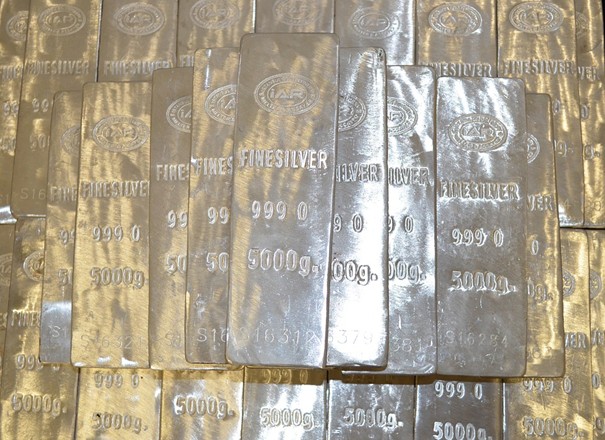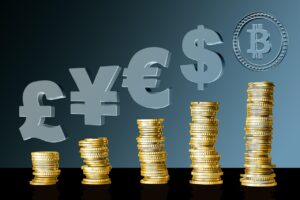How to invest in silver?
Precious metals like investing in silver is just one of many alternative investment options. With instability in the economy and financial markets due to the Coronavirus pandemic, interest in precious metals like silver has been renewed. Like gold, silver has been on a steady rise since March 2020. Precious metals can serve as the ultimate alternative investment, thriving when other investments become unstable and decline in value.
How to invest in silver
There are several ways you can invest in silver. This includes buying the metal itself and taking possession of it, investing in paper assets linked to silver, such as shares, funds and even companies that run silver mines.
- Buy Silver funds, ETFs and ETNs
- Buy silver in the form of barley
- Buy shares in companies operating silver mines
- Buy shares in Silver Streaming companies
The basics of silver investing
Buy Silver funds, ETFs and ETNs that can all own the metal through paper assets tied to it. So-called silver funds invest mainly in the shares of companies that mine silver. It is not equivalent to owning the metal itself but to participating in the industry that produces it. A silver fund holds a portfolio of shares in such companies. These shares generally parallel silver price levels. A silver exchange-traded fund (ETF) is a way to own silver itself, except you do it through a mutual fund. An example is the iShares Silver Trust (SLV). This fund generally tracks the price of silver, largely because it holds metal in custody. You don’t have direct ownership of the metal itself. Instead, you own shares in this ETF that own the silver. You can buy ETFs through most online brokers, including most CFD brokers. Exchange-traded certificates (ETNs) are debt securities that track an underlying silver index. Unlike bonds, they do not pay interest. Instead, the ETN price varies with the value of silver. ETNs are traded on major exchanges, in Sweden on NDX and Nasdaq, much like shares. Since ETNs do not hold silver or even shares in silver mining companies, investing in these securities is best for those more experienced with silver investing.
Buy silver bars
When you buy bullion, you are actually taking possession of metals and even keeping it “old school” in the form of coins and bullion. Coins are probably the most convenient way to own silver metals. For example, you can buy an ounce of pure silver coin, such as the American Silver Eagle or Canadian Maple Leaf. If you prefer to invest in larger quantities of silver, you may want to consider silver bars. They can be purchased in quantities ranging from one ounce to 100 ounces. However, you should be aware that silver bars are not traded as easily as coins. There’s also the issue of VAT, which we’ll get to below. You can buy silver coins and bars from local coin dealers or from national bullion dealers. Bullion Vault is one of the largest. Be careful when buying silver coins! Many coin dealers will try to persuade you to buy numismatic silver coins, which are something completely different. While silver coins play on the price of silver itself, numismatic coins get their value mainly from rarity. For example, many 19th century US silver coins have prices above $1000, which is almost 40 times its silver content. It is somewhat closer to investing in the artwork than in the silver itself. Complicating the numismatics is the fact that there is considerable disagreement about the grade and value of each coin. One dealer values a coin at $1000 while another decides it is only worth $750. Numismatic coins are only suitable for those who are experts in that field. Physical precious metal investments in Sweden are primarily made in gold, which is due to the Swedish VAT legislation which in our eyes is rather strangely constructed, and in some cases is downright hostile to silver and the other precious metals. Since January 1, 2000, investment gold has been exempt from VAT, as stated in the Value Added Tax Act 1994:200, Chapter 3, Section 10a. Surprisingly, the legislators have chosen to distinguish between investment gold and other precious metals such as silver, platinum and palladium, which are still subject to VAT. Wording of the VAT Act on legal tender. Chapter 3, section 23 of the VAT Act stipulates which goods and services are exempt from VAT. Chapter 3, section 23(1) states that the turnover of the following is exempt from VAT: “banknotes and coins which are legal tender, with the exception of collectors’ items, i.e. gold, silver or other metal coins or banknotes which are not normally used as legal tender or which are of numismatic interest”
Buy shares in companies operating silver mines
Another way to invest in silver is to buy shares in the companies that mine it. Instead of buying a portfolio of shares through a fund, you buy them individually. Shares in companies that operate silver mines are probably the most speculative way to participate in the silver market. Although they are generally in line with the price trend of silver and often exceed it, they also carry risks that are inherent in all companies. Many things affect the prices of shares. These include international disruptions, environmental disasters, foreign government regulation or nationalization, labor unrest, and international currency fluctuations. But as mining companies, they also have risks specific to mining activity. That includes high capital costs, the risks of mine exhaustion, an oversupply of the metal, and even the possibility of developing a mine only to find minimal or no silver.
Buy Silver Streaming companies
Streaming companies are like buying royalties in silver mining companies. These companies are not actually directly involved in silver mining. Instead, they provide financing to the companies that do. They will be paid back, often by being able to buy silver from their mining partners at well below the market rate. That allows them to sell the discounted silver at full market price and take home the difference as profit. Just like silver mining companies, streaming companies usually follow the price of silver. However, they underperform silver if their financing arrangements turn sour or if there are other difficulties with the mining companies they are affiliated with.
The basics of silver investing
Silver is not a real investment because it does not generate a product or service. Silver has value in and of itself, both as a precious metal and industrial metal. But it is otherwise difficult. It doesn’t produce anything, generate cash flow or provide a steady income. Silver is more in the realm of speculation than investment. If you choose to invest in silver, you should approach this commodity as a speculator. It may not be easy to discern, especially when the price of silver seems to be infinite. Most times and in most markets, silver is often traded stably and trades in a very narrow price range.
Is silver a good investment?
- Investing in gold versus investing in silver
- Benefits of investing in silver
- The risks of silver investments
- Is silver a good investment?
We answer this question by looking at the history of the silver price. For centuries, silver was not an investment at all. People used silver as actual money. People used it in everyday transactions, while gold was mainly held and used by the rich. Some people refer to silver as ‘poor man’s gold’. And because it was a monetary metal, its value remained relatively stable. Until the 1960s, the price of silver was below 1 dollar per ounce. That was one of the basic reasons why the US government usually made silver coins. However, when silver started to rise in price, the US government withdrew silver from US coinage under the Coinage Act of 1965. After demonetization, silver rose in price. As the price increase became more intense, it began to take on an investment characteristic. The price of silver dropped to around $5 per ounce from 1995 to the end of 2003. If you had owned silver during that eight-year period, you would have had almost no return on your money. In 2004, however, silver started to turn upwards, rising to close to $16 an ounce at the start of the financial crisis in 2007. But even with the onset of the crisis, the price fell by almost 50% by the end of 2008. Then began the second major price rally that confirmed silver as a legitimate crisis investment. From a price level of less than $9 at the end of 2008, it reached almost $50 per ounce in 2011. That’s a return of more than 500% in less than three years. By the end of 2014, the price dropped to the $16 range and even dropped as low as $12 in early 2020. But now it appears to be at the beginning of another possible historic price surge, having risen to more than $22 per ounce in less than six months. Based on the price trend, it seems there is a time to be in silver and a time to be out – which is most often.
Investing in gold versus investing in silver
Gold and silver are often used interchangeably because they have similar histories and price performance. Generally speaking, the prices of the two precious metals rise and fall. For this reason, it may not matter what you hold during a time of economic turbulence. Traditionally, gold has been considered the most common investment metal, probably because it is still considered something of a monetary asset. After all, the major central banks of the world all hold large reserves of gold. In recent decades, silver has become more of an industrial metal than a monetary one. The ratio of gold to silver, the so-called ration, has traditionally been between 50-to-1 and 80-to-1 but grew to almost 115-to-1 in early 2020.
Benefits of investing in silver and other precious metals
As we mentioned earlier, the price of silver has remained relatively static for most of its history. However, just like the price of gold, it tends to rise during times of economic or financial instability. It happened in the 1970s and during the 2008 financial crisis. And it seems to be happening again now with the Coronavirus pandemic. Silver is highly speculative and usually only goes up when traditional investments like stocks and bonds fall in value. For that reason, consider it an alternative investment (or speculation) to offset losses in traditional assets during times of financial turbulence. Since the price of silver can crash as quickly as it takes off, it’s best to limit your portfolio holdings to no more than a few percentage points. One thing is for sure: silver should not be considered a long-term growth asset, which you can hold in your retirement portfolio. Although it tends to perform well when stocks are falling, silver’s long-term prospects do not fit well with long-term investments.
The risks of silver investments
The main risk of investing in silver is price instability. As we have seen, the price of silver can rise dramatically but also fall just as quickly. If you buy silver during a big run-up in price – which is unfortunately what the average investor does – you could expose yourself to a sharp decline. Yet another risk factor is that the price of silver, unlike gold, is strongly influenced by industrial demand. Silver’s price performance could be poor if industrial demand is dampened by the same factors that cause instability in financial markets. If you choose to invest in silver coins or bars, transaction fees can be high – 5% to 10% is not unusual. If you pay it on both buying and selling, the price will have to rise substantially just for you to recoup your transaction costs. Anyone buying silver from a Swedish precious metals dealer also runs the risk of paying 25% VAT on it, which is not recoverable unless the investment is made in a company.
Investing in silver can be challenging
Silver is undoubtedly one of the more difficult commodities to invest in. It is difficult to know when to buy and when to sell. Most importantly, silver is not the type of investment that provides reliable capital appreciation or even income such as interest or dividends. If you choose to invest in silver, the best way is probably through a silver ETF. This allows you to participate in the metal itself with low fees and the ability to buy in and sell out quickly, and can be easily managed by low-fee brokers like Avanza. But you don’t have to be concerned about taking possession of metal or dealing with the uncertainty of the mining company. No matter what, keep your investment in silver at a low single-digit percentage of your overall portfolio. A 5% position may be enough to give you impressive returns during an economic meltdown, without crushing your portfolio if the price goes against you.
About the Vikingen
With Vikingen’s signals, you have a good chance of finding the winners and selling in time. There are many securities. With Vikingen’s autopilots or tables, you can sort out the most interesting ETFs, stocks, options, warrants, funds, and so on. Vikingen is one of Sweden’s oldest equity research programs.
Click here to see what Vikingen offers: Detailed comparison – Stock market program for those who want to get even richer (vikingen.se)













